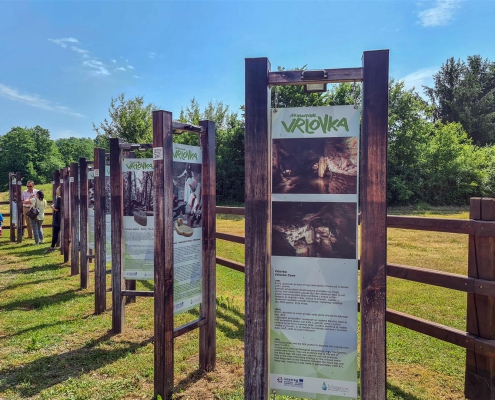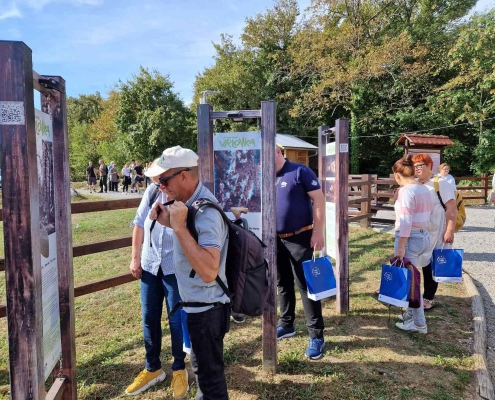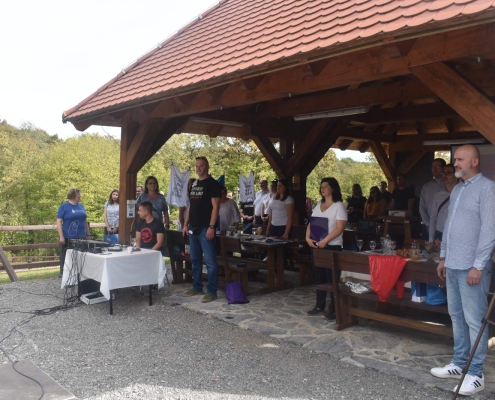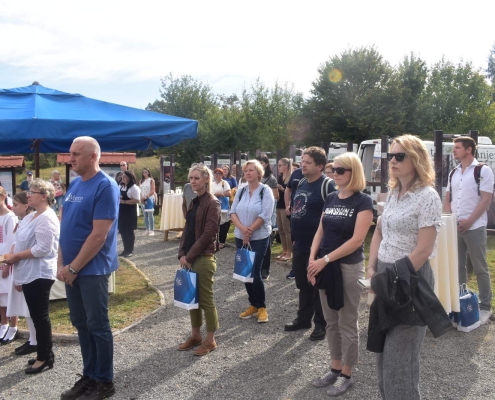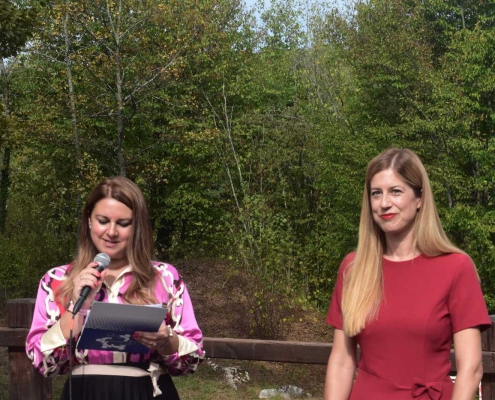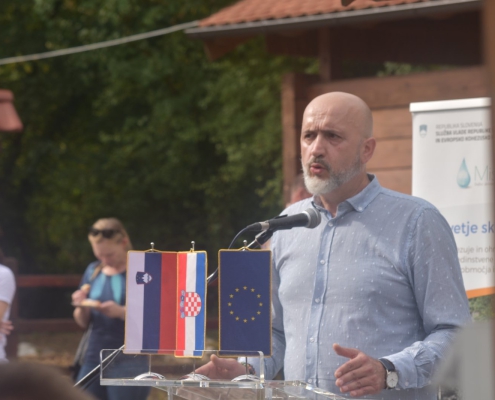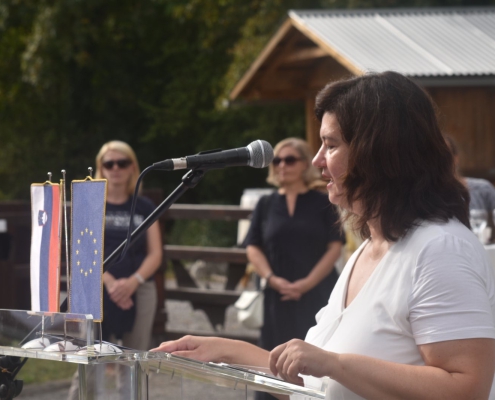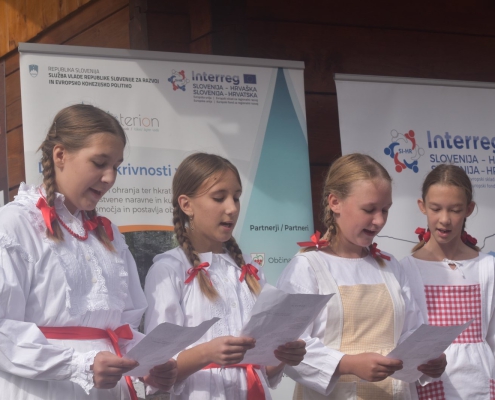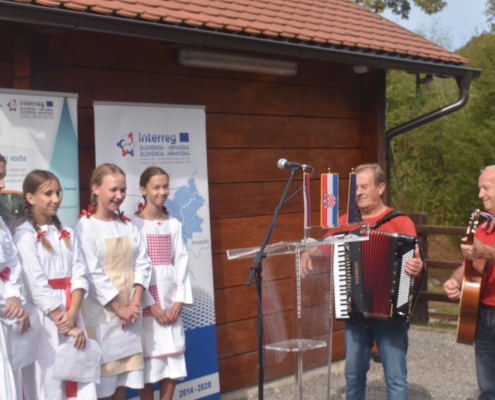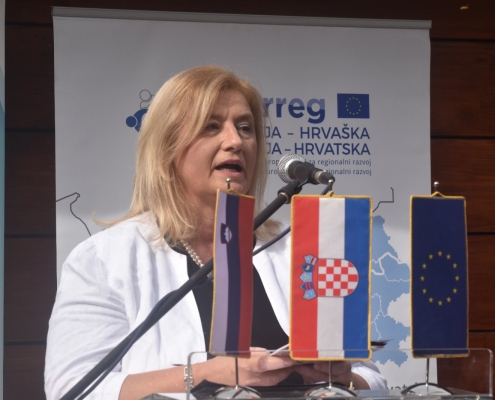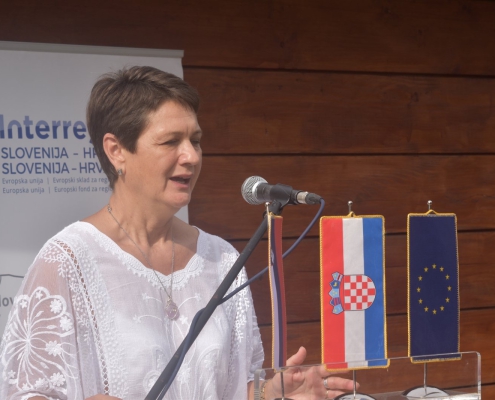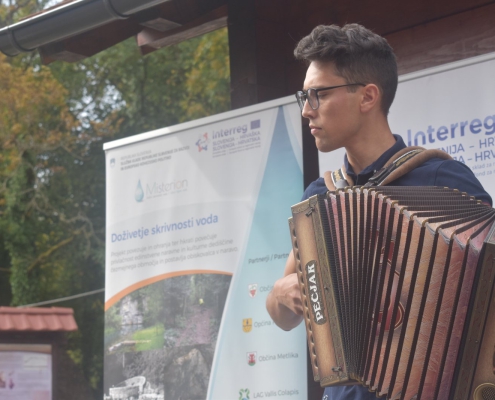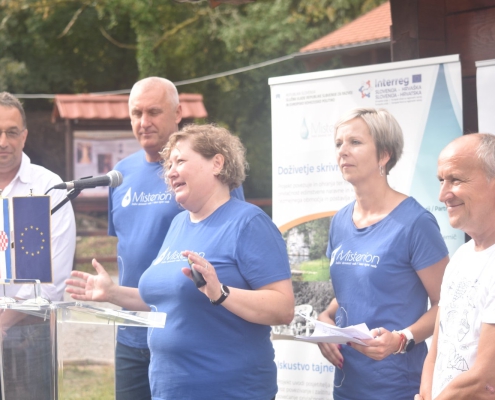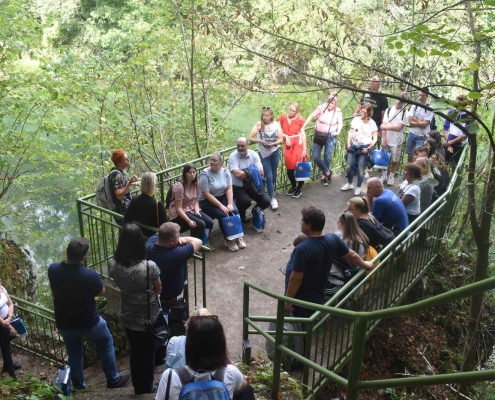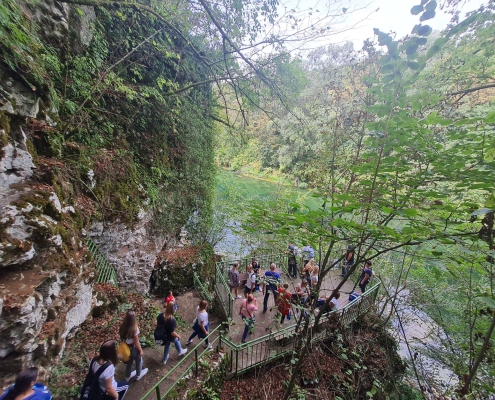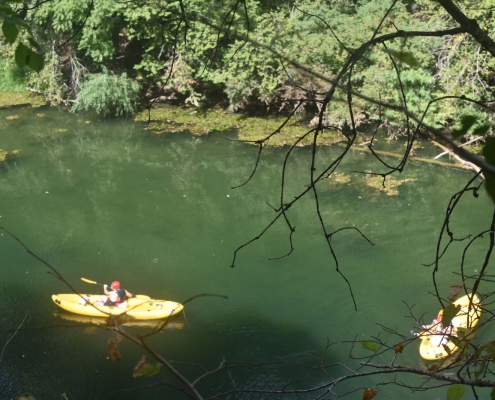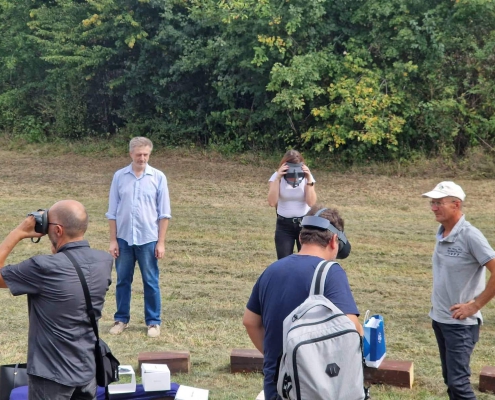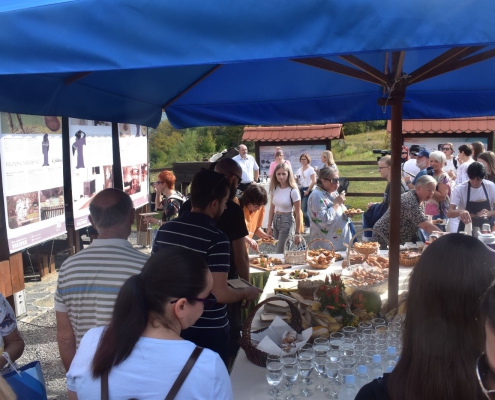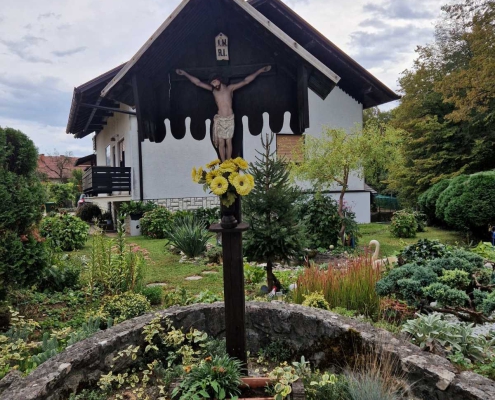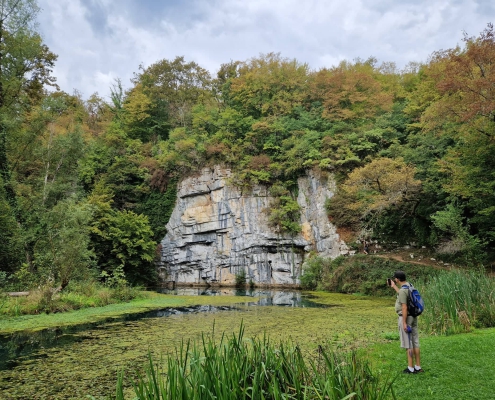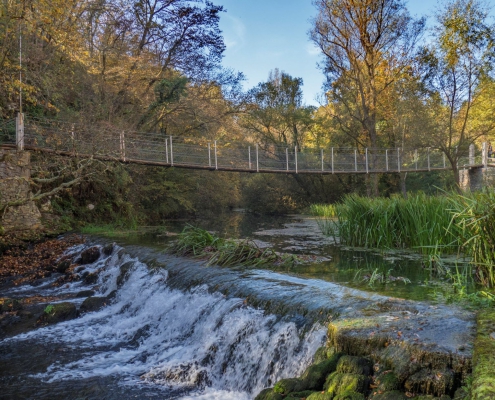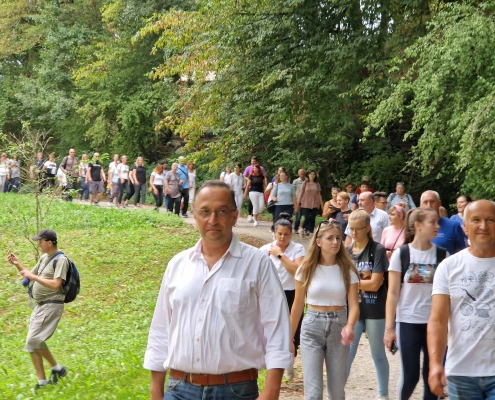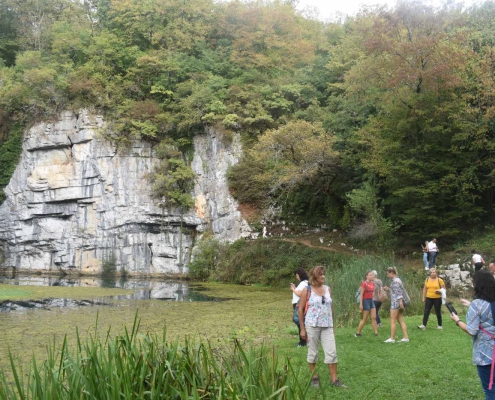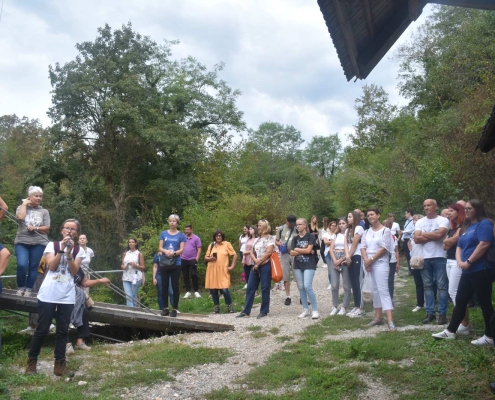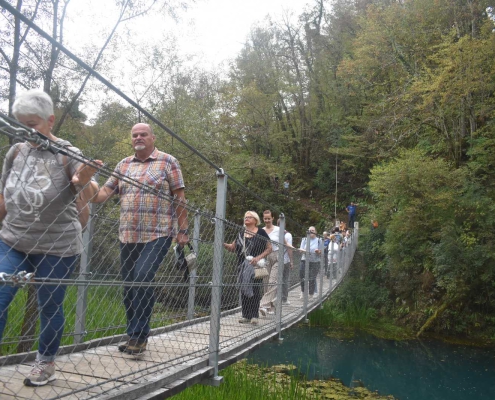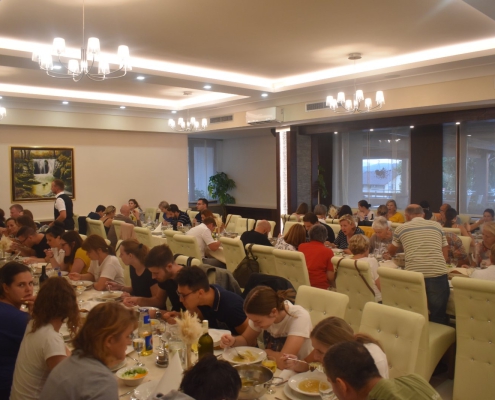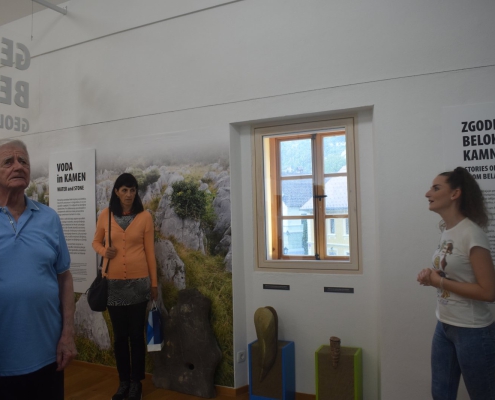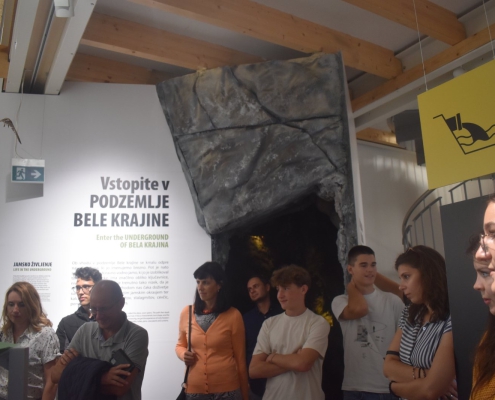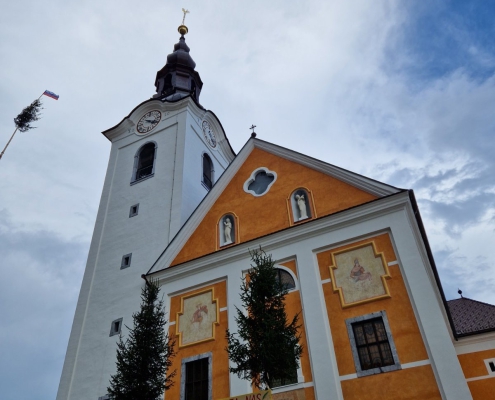European Cooperation Day ‘’Youth for Cooperation – Experiencing the Mysteries of Water’’
Kamenje (Croatia) and Semič (Slovenia), 8 September 2022 – Each year, Cooperation Programme Slovenia-Croatia 2014-2020 celebrates the European Cooperation Day, also known as ‘’EC Day’’. First held in 2012 at the initiative of the Interact Programme, EC Day brings together cooperation programmes to highlight the achievements and results of cooperation in Europe. The annual communication campaign, which usually takes place in September all over Europe, features a series of events that are organised by most of over 100 Interreg programmes in Europe to show the practical results of the programmes and projects to the general public, i.e. the European citizens. European Commission encourages all Interreg programmes to organise events marking EC Day to raise awareness of Interreg and its contribution to the relevant policies, and to show that while Interreg has limited Cohesion Policy resources, it still makes a difference and creates results with added value that improve the lives of European citizens.
The European Commission designated 2022 as the European Year of Youth in the aftermath of the covid-19 pandemic. Younger generations were hit hard by the pandemic. As the society tries to recover from the pandemic, the way out of the crisis should build on joining forces with the young as well as on recognizing and appropriately addressing their concerns. That is why this year’s celebrations marking EC Day put young people in the spotlight and are carried out under the slogan ”Youth for Cooperation”.
Slovenia’s Government Office for Development and European Cohesion Policy teamed up with the Croatian programme partner Ministry of Regional Development and EU Funds and EU-supported project MISTERION to organise an event called European Cooperation Day ‘’Youth for Cooperation – Experiencing the Mysteries of Water’’, a cross-border event which welcomed 115 participants.
The official part of the event held in Croatia’s Kamanj featured keynote speakers and project partners who highlighted the results and the importance of cross-border projects, including Mayor of Municipality of Kamanje Damir Mateljan, Head of Managing Authority of Cooperation Programme Slovenia-Croatia at the Government Office for Development and European Cohesion Policy Tanja Rener, Director of European Territorial Cooperation Office at the Ministry of Regional Development and EU Funds Stella Arneri, Mayor of Municipality of Semič Polona Kambič, member of Semič Youth Centre Lidija Kočevar, and President of Youth Council of the Karlovac County Renato Bukovac.
After introductory remarks, participants visited the Vrlovka Archaeological Park and enjoyed in an interesting and innovatiove presentation of cultural heritage. Using an interactive augmented reality-based multimedia application they were introduced to enhanced visuals of around 20 archaeological artifacts, experienced the process of archaeological excavations in a virtual world, got to know how it felt when the pre-historic settlements and forts were built, and immersed themselves in the stories of waters from the Neolithic to the modern day.
The event continued in Slovenia, taking the participants all the way to the spring of the Krupa River, where they embarked on the Karst educational trail which is known to be the only place in the programme area where the unique cave clam Congeria can be found. The themed trail led the participants across the reconstructed footbridge crossing the Krupa River, offering insights into the rich natural and cultural heritage of the area.
The event wrapped up in Semič, Slovenia. The participants were taken through the Semič Museum House which houses the natural history collection. The centerpiece of the collection are two unique animal species, i.e. the black olm, a species endemic to the region, and the cave clam Congeria. The participants also visited one of the largest churches in Bela krajina, the Church of Saint Stephen, an impressive church first mentioned in the 13th century and featuring unique Baroque elements.

